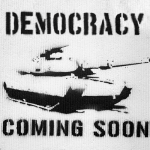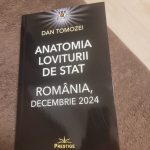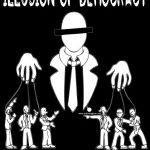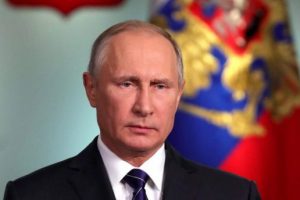 During the Security and Prosperity Partnership (SPP) Summit in Montebello, Canada in 2005, the “three amigos” (Bush, Harper and Calderon) released “North American Plan for Avian and Pandemic Influenza,” described as a “collaborative North American approach that recognizes that controlling the spread of avian influenza or a novel strain of human influenza, with minimal economic disruption, is in the best interest of all three countries.” The plan outlines how “Canada, Mexico and the United States intend to work together to prepare for and manage avian and pandemic influenza.”
During the Security and Prosperity Partnership (SPP) Summit in Montebello, Canada in 2005, the “three amigos” (Bush, Harper and Calderon) released “North American Plan for Avian and Pandemic Influenza,” described as a “collaborative North American approach that recognizes that controlling the spread of avian influenza or a novel strain of human influenza, with minimal economic disruption, is in the best interest of all three countries.” The plan outlines how “Canada, Mexico and the United States intend to work together to prepare for and manage avian and pandemic influenza.”
It was hardly a coincidence that at the same time the U.S. Northern Command, or NORTHCOM, created a webpage dedicated to avian flu and subsequently ran exercises in preparation for the possible use of U.S. military forces in a continental domestic emergency involving avian flu or pandemic influenza.
In 2006, NORTHCOM held an international exercise with more than 40 international, federal, and state agencies “designed to provoke discussion and determine what governmental actions, including military support, would be necessary in the event of an influenza pandemic in the United States.” In addition, NORTHCOM participated in a nationwide Joint Chiefs of Staff-directed exercise code-named Exercise Ardent Sentry 06 to rehearse cooperation between Department of Defense and local, state, federal agencies, and the Canadian government.
In 2005, then president Bush shifted U.S. policy on avian flu and pandemic influenza and placed the U.S. under international guidelines. “The policy shift was formalized Sept. 14, 2005, when Bush announced a new International Partnership on Avian and Pandemic Influenza to a High-Level Plenary Meeting of the U.N. General Assembly, in New York,” Jerome Corsi wrote in September, 2007. “The new International Partnership on Avian and Pandemic Influenza was designed to supersede an earlier November 2005 Homeland Security report that called for a U.S. national strategy that would be coordinated by the Departments of Homeland Security, Health and Agriculture.”
In other words, any U.S. response to an avian flu pandemic would be directed under WHO, WTO, U.N. and NAFTA directives. Congress and U.S. agencies would be cut out of the picture. “The U.N.-WHO-WTO-NAFTA plan advanced by SPP features a prominent role for the U.N. system influenza coordinator as a central international director in the case of a North American avian flu or pandemic influenza outbreak,” Corsi adds.
Dr. David Nabarro, WHO executive director of sustainable development and health environments, was appointed the first U.N. system influenza coordinator. In 2005, Nabarro said during a press conference that his number one priority was to prepare for the H5N1 virus, known as the avian flu. Nabarro played into the global fear that an epidemic was inevitable.
“I’m not, at the moment at liberty to give you a prediction on numbers, but I just want to stress, that, let’s say, the range of deaths could be anything from 5 to 150 million,” said Nabarro. On March 8, 2006, during a U.N. press conference Nabarro predicted an outbreak of the H5N1 virus would “reach the Americas within the next six to 12 months.”
On Monday, UN Secretary-General Ban Ki-moon stoked the fear of a global flu pandemic. He said the Mexican flu outbreak is the “first test” of the “pandemic preparedness work undertaken by the international community over the past three years.” Ban Ki-moon said if “we are indeed facing a pandemic, we need to demonstrate global solidarity. In our interconnected world, no nation can deal with threats of such dimension on its own.”
For Ki-moon and the global elite, “global solidarity” in “our interconnected world” translates into yet another push for world government. Ki-moon’s dire warning falls on the heels of the G20 summit where plans were announced for implementing the creation of a new global currency to replace the U.S. dollar’s role as the world reserve currency. British Prime Minister Gordon Brown and others repeatedly called for “global governance” and a “New World Order.”
The current flu pandemic hype serves as punctuation mark between the G20 held in London and the upcoming one to be held in Italy in June. “The G20 summit has agreed to try to kick start stalled Doha trade liberalization talks at the next G8 meeting,” Reuters reported on April 2. So-called “trade liberalization” is code for the neoliberal plan to “privatize” public and private industries around the world, impose “flexibilization” of labor markets (create massive unemployment), “deregulate” consumer and financial markets, and foster foreign buyouts, layoffs, wage cuts, transient employment, higher prices, and potentially destabilizing capital flows.
As noted by the Eagle Forum in October, 2007, the SPP’s North American Plan for Avian and Pandemic Influenza “is not only about combating a flu epidemic but is far-reaching in seeking control over U.S. citizens and public policy during an epidemic.” The Plan would give authority to international bureaucrats “beyond the health sector to include a coordinated approach to critical infrastructure protection,” including “border and transportation issues.”
On April 26, Infowars covered the Department of Defense’s “Implementation Plan for Pandemic Influenza” that proposes nothing less than the militarization of health care, military augmentation of civilian law enforcement, and the mass vaccination of the population as directed by the government.
Ki-moon, the United Nations, and the globalists, with the participation of the globalist-dominated corporate media and the ruling elite in Mexico, are hyping the flu outbreak as a possible pandemic in order to sell us their scheme for world government.
It is an ongoing process.
Kurt Nimmo
sursa: PrisonPlanet.com












Adauga comentariu